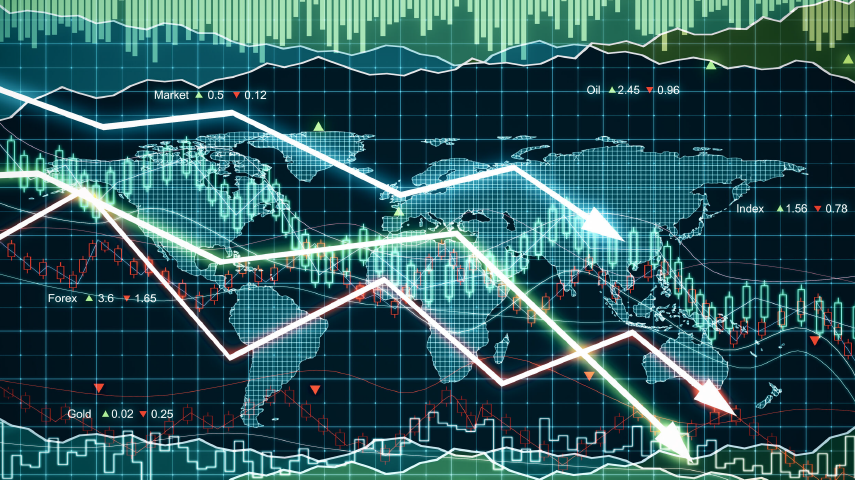It's January and investors are viewing the time ahead with both optimism and scepticism. In finance, time is a valuable resource and can be used as the basis for a life turning or even history making decision.
Investors also remember when their journey started. For some, the stock market crash on 2 March 2009 marked the beginning of a long bullish trend.
Since the global financial crisis, the majority of stock markets have had a positive upward journey. They have delivered exceptional returns to the benefits of investors who have seen the value of their portfolio increase, sometimes double digits, compounded annually.
In the aftermath of the global financial crisis, governments and regulatory authorities amassed enormous power over financial markets and enlarged the regulatory apparatus. One major reason for the move was to avoid the kind of mishappening and excesses that occurred with the 2008/9 stock market upheavals and bank collapses, a la Lehman Brothers and company. Better ready next time, was the motto.
Almost a decade later, governments and regulators found an opportunity to operationalise their capacities and it arrived with the stock market crash of 2020. Between 19 February and 23 March 2020, stock markets around the world fell significantly. The FTSE All-Share Index lost 33% of its total capitalisation, the MSCI World Index -fell 34%, and the SGX Straits Times Index, dropped 32%.
Fast forward to the present, the world is in the throes of the worst healthcare and economic crisis in history. Numerous governments and central banks have launched series of fiscal and monetary policies to stimulate the economy while launching various health and security measures to contain COVID-19 and prevent potential casualties and deaths. But financial markets do not seem to have taken notice, powering to yet more new historical highs on the waves of generous state-funded liquidity.
In the United States, the Federal Reserve implemented policies that addressed supervision, regulations and consumer protection. Part of its programmes included also new issuance of money to push the economy out of the doldrums. Between January 2020 and November 2021, the supply of money measured in M1 increased from $4 trillion to $20 trillion. In a similar fashion in the Euro Area M1 was at $12 trillion in November 2021 from $10 trillion in January 2020.
The deployment of numerous fiscal and monetary policies along with the additional liquidity resulted in an unprecedent increase of stock market valuations. Since the stock market crash of 2020, the major indices have once again showed positive development, e.g., the FTSE All-Share Index 49%, and the MSCI World Index recorded 16.50% for 2020 and 22.35% for 2021, the SGX Straits Times Index, 33%.
However, the first couple of trading weeks of 2022 have left investors with hiccups and some investors are longing for the start of a bear cycle. For investors, the year ahead can be full of surprises and risks, as many leading economic indicators such as inflation rate, jobless rate, fiscal deficits, and public debts are at alarming levels. Meanwhile, the low interest rate regime seems to remain unchanged for some more time and economic growth is expected in large economies. The International Monetary Fund expects the world output to be 4.9% in 2022 versus 5.9%, in 2021. Many are trying to figure out the relationships between these myriad indicators and to predict the exact moment of the next crash.
Besides the economic indicators, there are also geopolitical tensions between the major powers like the United States (US) and China, and between Russia and the US on the one hand and with the European Union on the other hand. These tensions have led to frictions in trade and conflicts in diplomatic relationship that could conflagrate into open hostility and carnage.
Moreover, the widespread social unrests, political divides, economic fallouts, not to mention deaths arising from the current pandemic and associated prevention and mitigation measures will continue to pose profound existential and quality of life questions in the foreseeable time.
All these make for the perfect primer to ignite the next, and perhaps greatest stock market implosion in history. Long time market watcher and investment contrarian, Harry Dent, proffers a dire outcome where most equities will lose an almost apocalyptic 80% of their value in 2022. But was quick to enjoin that it will also create unprecedented investment opportunities if one somehow manages to survive the aftermath.
Price crashes in the long term and value corrections (of +-10%) in the short term are inevitable parts of any market place or exchange. Which factors ultimately or in combination of would cause the stock market to crash will be for journalists and historians to work out. However, what is critical at hand are the measures and policies that governments and regulators can employ at speed to restore market function and trust once it happens.
Since the global financial crisis, the market has also learned to wait for governments and regulators to intervene, to backstop a worst-case scenario, and play the role of an insurer of last resort, of sort.
Perhaps what is really at stake is the political skill and will to intervene seemingly at all costs to maintain trust in the market. And that trust in the financial markets, their counterparties, and regulators will be a critical and precious asset in 2022.




All Comments